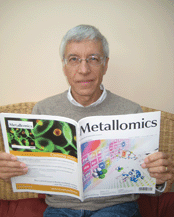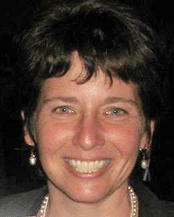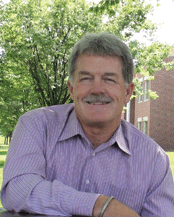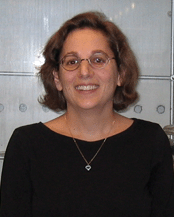Metallomics Editorial Board profiles
Wolfgang Maret
Wolfgang Maret FRSC is a Professor of Metallomics at King's College London, London, UK (Metal Metabolism Group, Division of Diabetes and Nutritional Sciences, Department of Biochemistry, Faculty of Life Sciences and Medicine). He obtained his MSc (chemistry) and PhD (natural sciences) from Saarland University, Saarbrücken, Germany. After postdoctoral research at the University of Chicago (Department of Biophysics & Theoretical Biology), his first faculty appointment was in the Research Center of the late Bert L. Vallee at Harvard Medical School. In 2002, he joined the University of Texas Medical Branch in Galveston, Texas, as an Associate Professor. His research interests began with the catalytic mechanisms of metalloenzymes as investigated with spectroscopic and kinetic methods, and continue with the role of metal ions in health and disease, the molecular mechanisms of how proteins control nutritionally essential metal ions, and the cellular mechanism of how metal ions control protein structure and function.
Mike Adams
Michael W. W. Adams is the Georgia Power Professor of Biotechnology and a Distinguished Research Professor of Biochemistry and Molecular Biology at the University of Georgia, Athens, USA. He is also Adjunct Professor of Microbiology and co-Director for the Center for Metalloenzymes Studies. Dr. Adams obtained his BSc and PhD degrees in biochemistry from King's College, University of London, UK. He spent two years as a post-doctorate at Purdue University before joining Exxon Research and Engineering Company in New Jersey in 1981. He moved to the Department of Biochemistry and Molecular Biology at the University of Georgia in 1987. Dr. Adams has pioneered research with hyperthermophiles, which are microorganisms from volcanic environments that thrive near and above 100 °C, the normal boiling point of water. His research team developed techniques to grow these organisms on a large scale, and through molecular, genomic, biochemical and microbiological approaches, they have discovered and characterized many new metal-containing enzymes, and metabolic pathways involved in biopolymer conversion and in the production of potential biofuels such as hydrogen. He has over 300 publications in the fields of high temperature microorganisms and metalloproteins. For the past ten years, he was the Editor of the Journal of Bacteriology. In 2003, he was elected to the American Academy of Microbiology, and in 2010 received the Charles Thom award for research excellence from the US Society of Industrial Microbiology for “outstanding research contributions in industrial microbiology and/or biotechnology”.
Rachel Austin
Rachel Narehood Austin is a bioinorganic chemist in the Department of Chemistry at Bates College. She joined the faculty in 1995 after completing a PhD at the University of North Carolina in Chapel Hill. Her laboratory has a longstanding interest in understanding the mechanisms of metalloenzymes, especially those important in the global cycling of elements, and developing and characterizing heterogeneous catalysts that can be used for green chemistry or environmental remediation. A major emphasis of her current research is the development of a detailed picture of both the structures and mechanisms of the metalloenzymes that have evolved to catalyze the oxidation of alkanes. Funding for the lab has been received from the National Science Foundation (including grants for an EPR spectrometer with low temperature capabilities, a GC-MS and GC-FID, a 400 MHz NMR, in addition to research support), NIH, the Howard Hughes Medical Institute through several institutional grants to Bates College, the Merck/AAAS research fund, Pfizer, DOE, and the Dreyfus Foundation in the form of a Henry Dreyfus Teacher Scholar Award. She is the past chair (together with co-Chair Ariel Anbar) of the Environmental Bioinorganic Chemistry Gordon Research Conference.
David Koppenaal
David W. Koppenaal is Chief Technology Officer at the Environmental Molecular Sciences Center (EMSL) at Pacific Northwest National Laboratory in Richland, WA. Dr. Koppenaal's research interests include the development of new instrumental techniques for metallomics applications, and the metallomic study of cyanobacterial systems. Dr. Koppenaal was an early proponent of metallomics as a new science discipline, serving as an advocate and speaker on this topic since 2000, organizing the first symposia focused on this topic in the US, and serving as co-chair of the 2nd International Metallomics Symposium (2009). Dr. Koppenaal is well-known for his fundamental science investigations and innovations in atomic mass spectrometry, including the initial development and demonstration of effective reaction cell technology and associated ion molecule reaction approaches for interference reduction in ICP-MS. More recently, he has developed and applied ultra-high resolution orbital trapping techniques to metallomics applications. Dr. Koppenaal has also served as an Editorial Board member for JAAS, and as Chair of the Analytical Division of the American Chemical Society. He is a Fellow of the Royal Society of Chemistry, the American Association for the Advancement of Science, and the American Chemical Society.
Yasumitsu Ogra
Yasumitsu Ogra obtained his BS degree from Tokyo University of Pharmacy and Life Sciences in 1991, and his PhD from Chiba University (Japan) in 1996. He continued his scientific research as a post-doctoral fellow at the National Institute of Industrial Health (Japan), and worked in the Department of Toxicology and Environmental health, Graduate School of Pharmaceutical Sciences, Chiba University as a research associate (1997–2003), and as an associate professor (2004–2009). He was a visiting scientist of the French National Research Council (CNRS) in 2002 and 2003. Since April 2009, he has been a full professor at the Laboratory of Chemical Toxicology and Environmental Health, Showa Pharmaceutical University, Tokyo, Japan. His current research interests include the elucidation of the mechanisms underlying the physiological and toxicological effects of metals and metalloids, and the development of a novel approach to metal/metalloid toxicology by the combination of speciation/fractionation of metals/metalloids and molecular biological techniques. Namely, his special attention is devoted to toxicology in metallomics, i.e., toxicometallomics.
Chris Orvig
Chris Orvig was born and raised in Montréal. He followed his father to McGill University, for his Hons. BSc in chemistry in 1976, and subsequently completed his doctorate (as a Natural Sciences and Engineering Research Council – NSERC – Canada scholar) in technetium chemistry at M.I.T. with Prof. Alan Davison, FRS. After an NSERC postdoctoral fellowship with Prof. Kenneth N. Raymond at the University of California, Berkeley (1981–1983), and one year with the late Prof. Colin J. L. Lock at McMaster University, he joined the Department of Chemistry at the University of British Columbia in 1984, where he is now Professor of Chemistry and Pharmaceutical Sciences, and Director of the Medicinal Inorganic Chemistry Group. His scientific interests are firmly based in the areas of medicinal inorganic chemistry and coordination chemistry – he has been involved over the years with radiopharmaceutical chemistry, metal ion decorporation, and metal ion neurotoxicology, as well as chemotherapeutic metal complexes and ligands. Orvig has received various research and teaching awards, has published more than 200 research papers, and is a co-inventor on many issued patents. He is also a Fellow of the Royal Society of Canada.
Deborah Zamble
Deborah B. Zamble graduated from the University of Toronto in 1993 with a BSc in Chemistry and Biochemistry, completing her undergraduate thesis work with Bibudhendra Sarkar. She earned a PhD in Biological Chemistry at M.I.T. in 1999, where she worked under the guidance of Stephen J. Lippard on the mechanism of action of the anticancer drug cisplatin. As a postdoctoral fellow (1999–2001), with Christopher T. Walsh at Harvard Medical School, she studied the zinc-containing component of the antibiotic Microcin B17 synthetase. She is now a Professor of Chemistry at the University of Toronto, Canada. Her main areas of interest concern bioinorganic chemistry and the mechanisms of action of proteins involved in intracellular nickel homeostasis.
| This journal is © The Royal Society of Chemistry 2015 |







